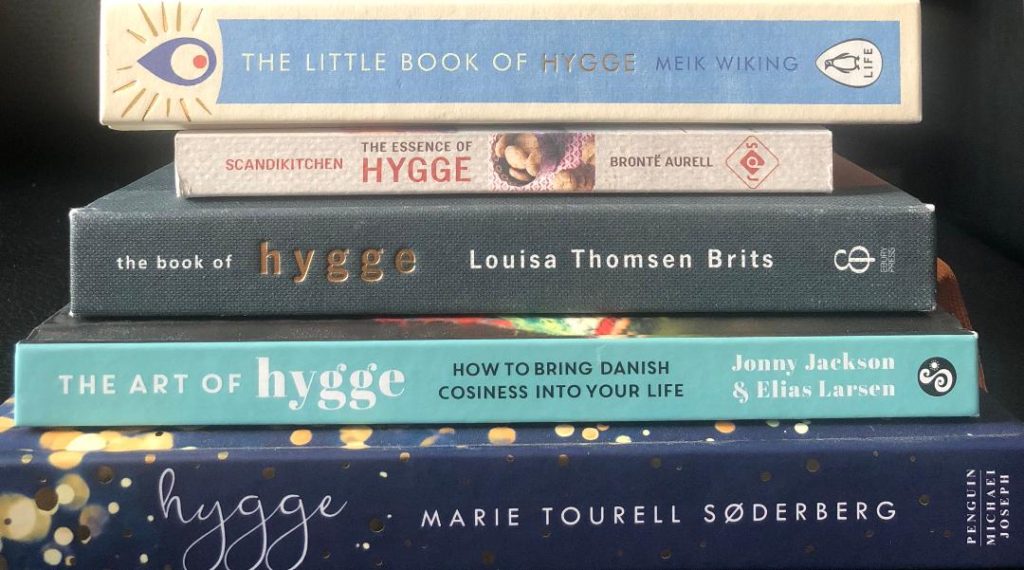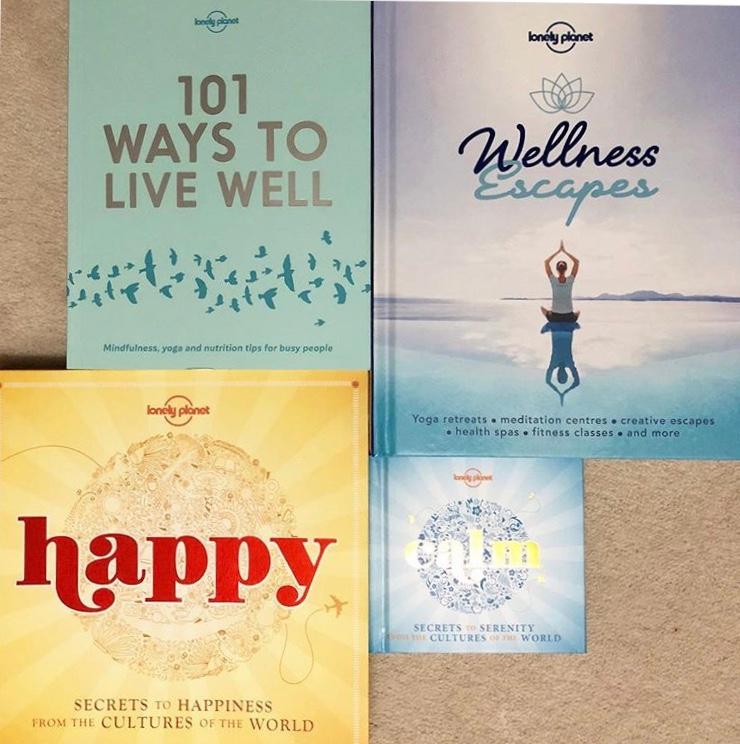9 Secrets to Happiness from the Cultures of the World
In the foreword of Happy: Secrets to Happiness from the Cultures of the World first published in 2011, Maureen Wheeler, Lonely Planet co-founder, writes that ‘happiness in travel comes from the moments you are aware how lucky you are to be in that place, at that time, and how wonderful the world is’.
As I’m reading this book, I’m reflecting on my own travels and what traveling means to me. I first traveled abroad at the age of eight; visiting Thailand and then Singapore was such an eye-opening and character-shaping experience, for which I’m always going to be grateful to my family. As I’ve recently written, for me, traveling is so much more than just visiting a new place, city or country, and taking beautiful pictures. Coming in contact with different cultures has given me a springboard to start challenging the world and not taking a single thing for granted.
‘One of the unspoken gifts of travel is it allows us the chance to open our mind, eyes, and soul to how different cultures invite happiness into their lives’.
In the introduction to Happy: Secrets to Happiness from the Cultures of the World I read that ‘it’s some of the most basic aspects of life found in every culture that bring us the most joy – connection, mindfulness, gratitude, play’. As a Psychiatrist, I’ve learned how important these aspects are for our wellbeing. However, despite being a travel enthusiast, I had not previously considered these very important aspects in the context of traveling. Reading this book, I put two and two together and realize that traveling and the subsequent contact with different cultures can teach us so much about wellbeing, and help us live happier lives.
‘Experiences bring more long-term happiness than do possessions’. Absolutely true. Even more so, when it comes to traveling, for traveling is so rich in experiences. These may be the experience of traveling per se (the journey), or the experiences that traveling allows us to live (i.e. watching a sunset in Santorini, going to a jazz festival in Norway, or learning horse-riding in Martinique).

In Happy: Secrets to Happiness from the Cultures of the World I read about 55 cultural experiences from 43 countries of the world. By ‘cultural’ I mean that these experiences are embedded in the cultures and traditions of these countries. These are experiences that can teach us a lot about happiness, and by distilling their core messages and secrets, we can introduce an extra layer of happiness to our everyday lives (without necessarily having to travel to those far-away places). The authors group these experiences/secrets in three categories: mind, body, and spirit. Let’s now have a look at 9 of these:
Mind
Secret 1: Have a goal and work towards achieving it
The Camino de Santiago de Compostela, also known as the Way of Saint James, is a network of routes to the shrine of Saint James in the cathedral of the Galician town of Santiago de Compostela in North-western Spain. Nowadays, it is not just pilgrims that follow in the footsteps of thousands of Catholics from all over Europe. The Camino de Santiago is also popular among hikers, travelers and those seeking a spiritual retreat from modern life.
Indian doctor and philosopher Swami Sivananda said: ‘life is a pilgrimage. The wise man does not rest by the roadside inns. He marches direct to the illimitable domain of eternal bliss, his ultimate destination’.
Some may argue that the journey is more important than the destination; however, the sense of achievement of a goal is not to be under-estimated. At the end of each year, many of us make resolutions and set goals for the New Year. Come the 1st of January, we have the best intentions to achieve these goals. Yet, a year later few can share a success story. A few tips, however, can go a long way…
Secret 2: Keep your mind stimulated
Saraswati Day, or Knowledge Day, is a traditional Balinese holiday to celebrate the day when knowledge is given by God through Saraswati, the Hindu goddess of knowledge, music, art, wisdom, and learning. Even though Indonesia has the largest Muslim population in the world (225 million Indonesians or 87.2% of the country’s population identify themselves as Muslims), Hindu is the main religion on the island of Bali. Saraswati Day is celebrated every 210 days, on the last day of the Balinese Pawukon calendar. The Balinese celebrate by making offerings and praying; they put offerings on their books and Hindus Scriptures – the classic sources of knowledge.
I have previously written about the benefits of purposeful activities for our mental wellbeing. Purposeful activities that include the acquisition of knowledge (i.e. formal education, learning a foreign language or a musical instrument) can foster our sense of self-worth and increase our self-esteem by helping us gain a sense of achievement and mastery.
Secret 3: Be grateful for what you have
Thanksgiving Day is a national holiday celebrated on the 4th Thursday of November in the United States and on the 2nd Monday of October in Canada. It is also celebrated in the Caribbean and in Liberia. It dates back to the 17th century when English colonists from Plymouth thanked God for a safe journey and a successful settlement to America, and a good harvest. They were joined by the local Wampanoag people, who helped them settle there.
I have previously written about the benefits of gratitude for our psychological wellbeing. A large number of published studies have indeed confirmed the strong association between gratitude and positive thinking on the one hand and wellbeing on the other; they also explain the reason for this. Neuroplasticity, or brain plasticity, refers to the ability of the brain to change (both its structure and its function) throughout one’s life. This is commonly called rewiring; it involves creating and strengthening brain pathways (neural circuits). Neuroscience research shows that positive thinking strategies, including reflection and gratitude journals, are effective ways to improve one’s mental wellbeing for this very reason; they contribute to the rewiring of the brain. The same is true of mindfulness and meditation.
Secret 4: Bring your mind back to real-time
‘Mindfulness’ refers to the psychological process of focusing one’s attention to the present moment. Mindfulness-based therapies have been developed since the 1970s based on Eastern traditions, Zazen being one of them. Meaning ‘sitting’ or ‘seated meditation’, this is a type of meditation unique to Zen Buddhism. Even though Zazen originated in China over a millennium ago, the term actually comes from the Japanese. Central to the practice of Zazen is the kekka-fuza (‘full-lotus position’); at the end of the day, the aim of Zazen is actually this: sitting.
As a Psychiatrist, I strongly endorse meditation and mindfulness, not as religious practices, but as a way to improve our wellbeing. Meditation and mindfulness strategies can be helpful to most of us and not only to those affected by mental (or even physical) illness. They can help us become less reactive to stress, build resilience, cope better with health problems (including long-term physical illnesses) and reduce psychological distress.
To read more about zazen – its benefits and how to practice it, click here and here.
Body
Secret 5: Connect your whole being – mind, body, and breath
Even though the origins of yoga are a matter of debate, we know that it originated in ancient India. We also know that the practice of yoga has a number of benefits – both physical and psychological. Having a meditative and spiritual core, as well as combining physical exercise with an awareness of breath, yoga can help us relax and unwind.
In the West, yoga classes can be quite expensive; yoga retreats are pricey, too. But you don’t necessarily have to join a class or retreat to practice yoga. I have recently discovered an app called ‘Down Dog’, which allows me to practice yoga at home. The YouTube channel ‘Yoga with Adriene‘ is another wonderful way to practice yoga, as well as meditation, in the comfort of your home.
Secret 6: Exercise to produce endorphins, and get a physical and mental workout
The Bund, one of the busiest tourist destinations in the Chinese city of Shanghai, comes to life every morning when thousands gather there to practice tai chi. Originally a martial art, tai chi originated in China many centuries ago. It has now become a popular form of exercise across the world. More recently, research suggests that the practice of tai chi can be beneficial to our physical as well as mental health.
These benefits are not unique to tai chi. We all know that exercise is good for us. There are several reasons why. First, being in better physical shape makes us feel more attractive and boosts our self-esteem and confidence.
Second, exercise is beneficial to our physical health; it helps reduce the risk of cardiovascular disease (such as coronary heart disease and stroke), diabetes (type 2) and metabolic syndrome, and some cancers (including colon and breast cancers). It also helps control our weight, strengthen our bones and muscles (therefore reducing the risk of osteoarthritis and hip fractures), and overall increase our chances of living longer.
Third, exercise (and physical activity in general) can be beneficial to our mental health too, including our mood and cognition. Research has shown that exercise lowers the risk of dementia and depression, by releasing endorphins. Exercise can also foster our sense of self-worth and increase our self-confidence not only by making us feel better about our appearance but also by helping us gain a sense of achievement and mastery.
I personally try to walk 10,000 steps each day but I also go to the gym for weight lifting twice a week. Sometimes, but not as often as I would have liked, I also go for jogging and swimming, or exercise at home. My favorite exercise, however, is yoga for the reasons highlighted above.
Secret 7: Take the time to appreciate good food and drink
Akin to the Japanese tea ceremony, the Ethiopian coffee ceremony is a 3000-year-old ritual of making and drinking coffee. It offers an opportunity not only to cherish the wonderful aroma of freshly brewed coffee but also to share this experience with others.
The philosophy behind the Ethiopian Coffee Ceremony reminds me of the modern concept of mindful eating. In keeping with the principles of mindfulness, mindful eating is about bringing our awareness to our eating. In other words, it is about giving our full attention to our eating and focusing on the process of eating and enjoying our meal. It seems that the Ethiopians discovered this secret thousands of years before us.
Secret 8: Get things off your chest with like-minded others
If you visit Germany, you may come across the word ‘Stammtisch’. This translates into ‘regulars’ table’, but it means more than just a piece of furniture. It rather refers to an informal group meeting held on a regular basis, often around a large table. In the not so distant past, a stammtisch was associated with a certain social status. Today, however, it is much more inclusive. It provides a space to talk about common interests; these can be anything from politics to hobbies to philosophies and so on.
On the one hand, a stammtisch reminds me of Meetup, the online service that brings people with similar interests together – meeting in person rather than on the world wide web.
On the other hand, it reminds me of counseling and psychotherapy. Like a Stammtisch, counseling and psychotherapy involve a meeting held on a regular basis. This meeting may be between two individuals (the patient or client and the therapist or counselor) or more (as in group therapy). Irrespectively of the type of therapy (for there’s a large number of psychological therapies differing both in their theory and the therapeutic approach used), it encourages the patient or client to get things off their chest and share their thoughts and feelings. By providing a space where this internal world can be acknowledged, validated, understood and explored, therapy has the potential to help anyone who has some sort of psychological, emotional or interpersonal difficulties (i.e. low self-esteem, anger or relationship problems).
Spirit
Secret 9: Find the ultimate contentment in friends, family, and a good book
The Danish concept of hygge could not, of course, be absent from Happy: Secrets to Happiness from the Cultures of the World
Defined as ‘the practice of creating cozy and congenial environments that promote emotional wellbeing’, hygge is regarded as a defining characteristic of Danish culture, even though the word actually originates from a Norwegian word meaning wellbeing. According to the United Nations World Happiness Report that gets published every year, both Denmark and Norway (the Nordic countries, too) are thought to be the happiest on Earth.
Hygge can be experienced whilst spending quality time with family and friends (perhaps sharing a bottle of wine around an open fire), or alone reading a good book and enjoying a warm cup of tea, coffee or hot chocolate.
There is a huge evidence base around the value of reading to support health and wellbeing. In the UK, there is a scheme endorsed by health professionals and supported by public libraries that allows people to visit their local library and take a book out for free. ‘Reading Well’ has two strands: ‘Books on Prescription’ and ‘Mood-boosting Books’. As a Psychiatrist, I often encourage people to visit their local library and read – not necessarily self-help books, even though they are an excellent resource when it comes to the management of psychological difficulties.

From hygge to lykke
In The Little Book of Lykke: The Danish Search for the World’s Happiest People Meik Wiking, CEO of the Happiness Research Institute in Copenhagen, distinguishes between the three dimensions of happiness: cognitive dimension (overall satisfaction with life), affective dimension (the emotions experienced on a day-to-day basis) and eudemonia (sense of purpose).
Happiness
According to the ‘In the Shadow of Happiness’, a recent report published by the Nordic Council of Ministers, ‘in international happiness research there is considerable consensus on distinguishing between three dimensions of subjective wellbeing’. These include:
1 life evaluation (i.e. how happy or satisfied we feel with life in general),
2 affect (how happy they currently feel),
3 and eudemonia (how meaningful they perceive their life to be).
In The Blue Zones of Happiness: Lessons from the World’s Happiest PeopleDan Buettner explores these three dimensions (or strands) in three different countries, which are often heralded as the world’s happiest places: Denmark, Costa Rica and Singapore. For instance, he explains how the Danes score high on the purpose strand, as well as the pleasure (experienced happiness) and pride (evaluative happiness) ones.
In Happiness: How to Get Into the Habit of Being Happy Gill Hasson considers happiness from two viewpoints: a short-lived pleasure versus a general sense of wellbeing. She discusses Aristotle’s distinction of happiness into hedonic happiness (small pleasures) and eudemonic happiness (a sense of meaning, purpose, and fulfillment).
Despite these differences in these definitions of happiness, it is clear that happiness is multi-dimensional, and encompasses both pleasure and purpose. Furthermore, happiness is a skill that can be practiced and learned. I hope that the secrets I have shared above will help you in your journey towards happiness.
“Happiness depends on ourselves.”
Aristotle
Alex
(the Traveling Psychiatrist)
Further reading
For a holistic approach and practical tips to improve physical and mental wellbeing, check out my seminal posts:
10 tips for better mental health & wellbeing (part 1)
10 tips for better mental health & wellbeing (part 2)
If you’d rather read about hygge and why Scandinavians are amongst the happiest people in the world, check out my post ‘Hygge, Lagom & Lykke: 10 books about Scandi happiness’.
Other inspiring books by Lonely Planet that embody my personal values and the Traveling Psychiatrist’s philosophy:
Calm: Secrets to Serenity from the Cultures of the World

To follow my travels around the world, simply subscribe to the Traveling Psychiatrist (just click on the menu on the left hand side).